This route covers two millennia of Parisian construction history, showing the architectural layers of the city. It includes Roman remains such as the first-century Lutetia arenas, medieval structures, classical palaces, and modern constructions from the 19th and 20th centuries. Each location documents specific building phases and technical developments in the French capital. The selection ranges from well-known landmarks to less visited historical sites. The 1889 Eiffel Tower stands alongside Roman thermal bath fragments and medieval churches. This collection allows visitors to trace urban development from the ancient settlement of Lutetia to the modern metropolis and compare different architectural styles.
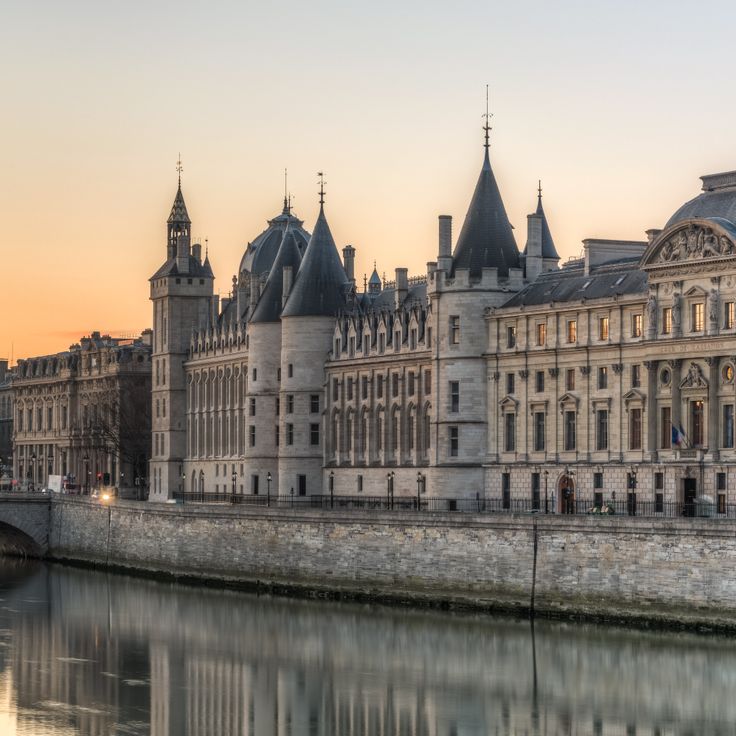
Paris, France
The Conciergerie was originally part of the royal palace on the Île de la Cité. In the 14th century, the building was converted into a prison and served as a detention center for thousands of prisoners during the French Revolution. Marie Antoinette spent her final 76 days here before her execution in October 1793. Her cell was later transformed into a commemorative chapel. The Gothic halls from the 14th century remain preserved.
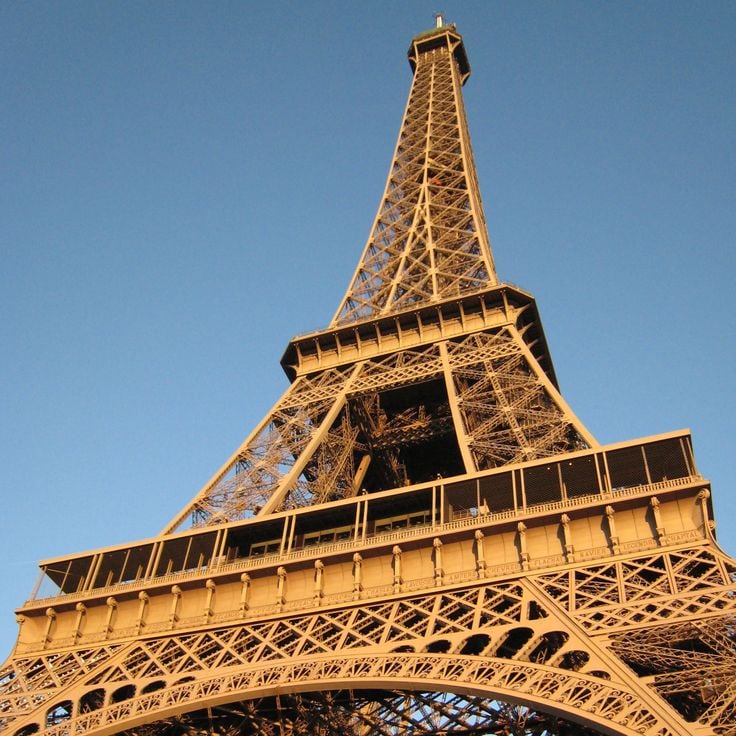
Paris, France
The Eiffel Tower rises 324 meters above the Champ de Mars, offering visitors three public observation platforms at different levels. The top floor houses a reconstructed laboratory that commemorates Gustave Eiffel's scientific work. The iron lattice structure was built for the 1889 World's Fair and originally served as a radio transmission tower.
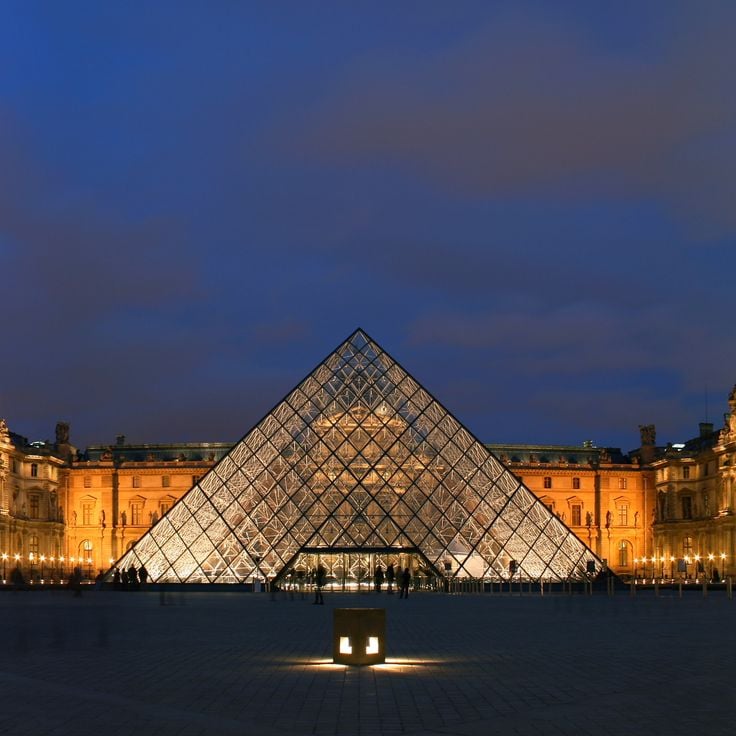
Paris, France
The Louvre Museum was built in the 12th century as a royal fortress before becoming a palace. The medieval foundations lie beneath the Sully Wing and display the original defensive architecture. A walkway takes visitors through the preserved walls from the Middle Ages, where archaeological remains document the early history of the building.
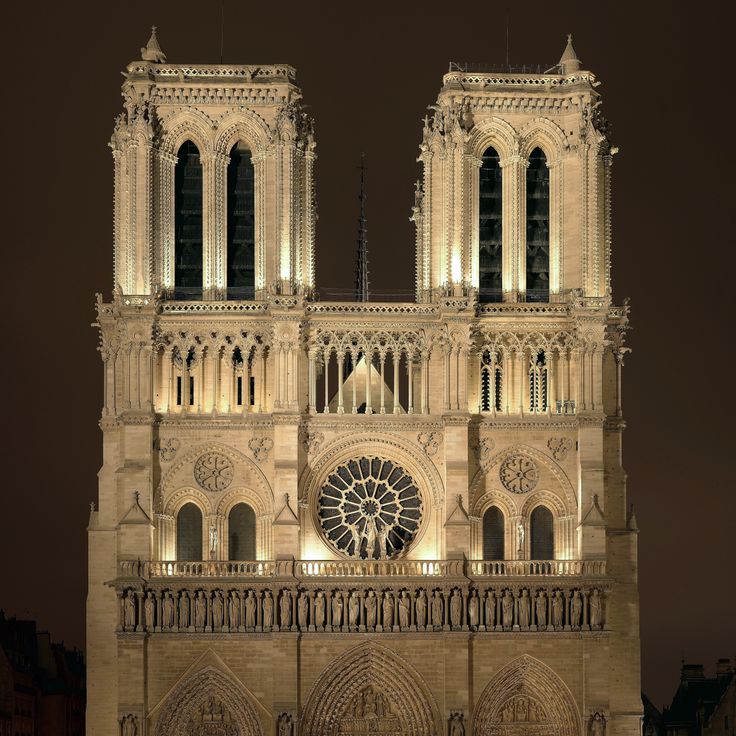
Paris, France
The stone gargoyles on the facade of Notre Dame de Paris Cathedral serve as water drainage systems from the roof. These architectural elements represent mythological creatures and animals. Their function is to direct rainwater away from the walls, protecting the building structure from water damage.
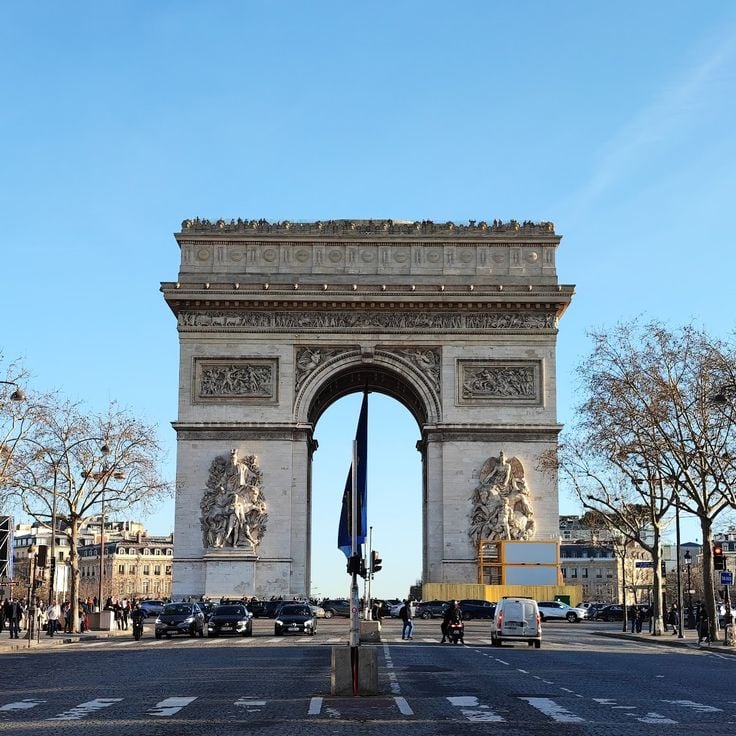
8th arrondissement of Paris, France
The Arc de Triomphe was commissioned by Napoleon Bonaparte following the Battle of Austerlitz and built between 1806 and 1836. The monument honors the armies of the French Revolution and Empire. Beneath the arch lies the Tomb of the Unknown Soldier from World War I, installed in 1920, with an eternal flame rekindled every evening at 6:30 PM. The names of 558 generals and major battles are engraved on the interior walls.

1st arrondissement of Paris, France
Sainte-Chapelle was built between 1242 and 1248 by order of King Louis IX to house the relics of the Passion of Christ. The royal chapel consists of two superimposed chapels and features fifteen monumental 13th-century stained glass windows covering 600 square meters depicting biblical scenes. The construction demonstrates the technical achievements of High Gothic architecture with its ability to replace massive stone walls with expanses of glass.
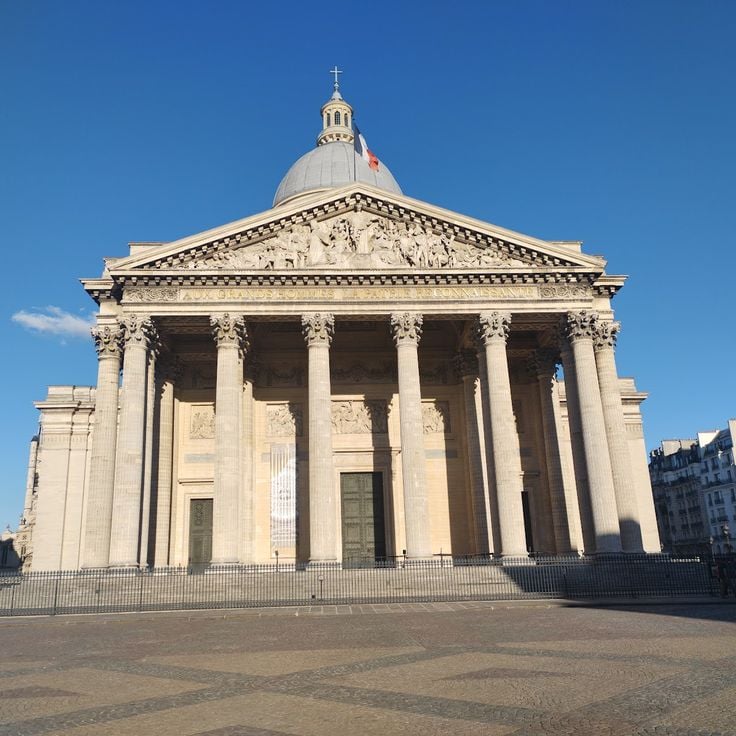
5th arrondissement of Paris, France
The Panthéon was constructed between 1758 and 1790 by architect Jacques-Germain Soufflot as the Church of Sainte-Geneviève. Following the French Revolution, it was transformed into a national mausoleum in 1791. This neoclassical building houses the tombs of distinguished French figures including Voltaire, Rousseau, Victor Hugo, Marie Curie, and Alexandre Dumas. Inside hangs a replica of Foucault's pendulum, which first demonstrated Earth's rotation here in 1851. The dome rises to 83 meters and provides access to a viewing platform.
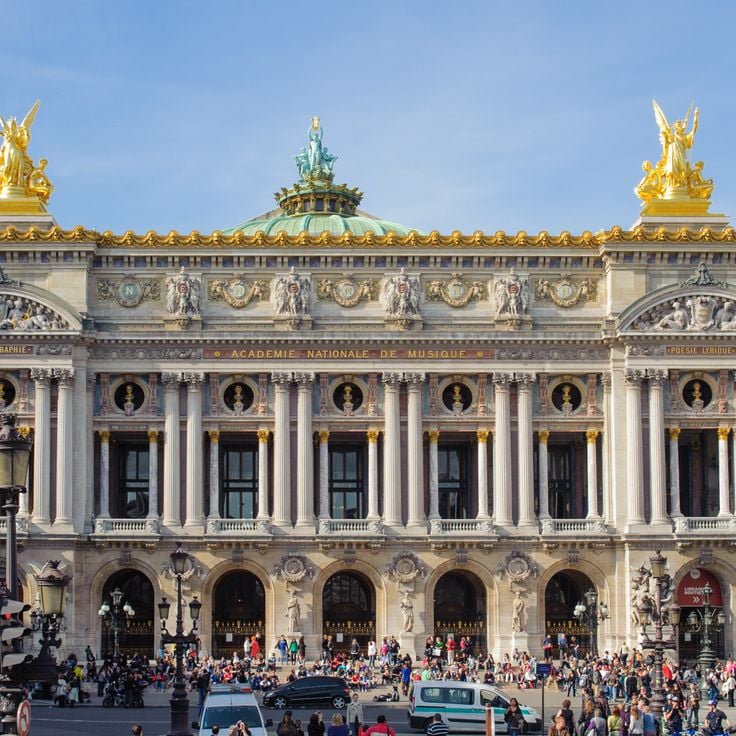
9th arrondissement of Paris, France
The Palais Garnier received a new ceiling painting in its auditorium in 1964. French Minister of Culture André Malraux commissioned painter Marc Chagall to create a modern ceiling above the historic opera hall. Chagall produced a colourful work depicting scenes from fourteen operas and ballets, covering the original ceiling by Jules-Eugène Lenepveu. This artistic intervention in the building, inaugurated in 1875, sparked debate at the time.
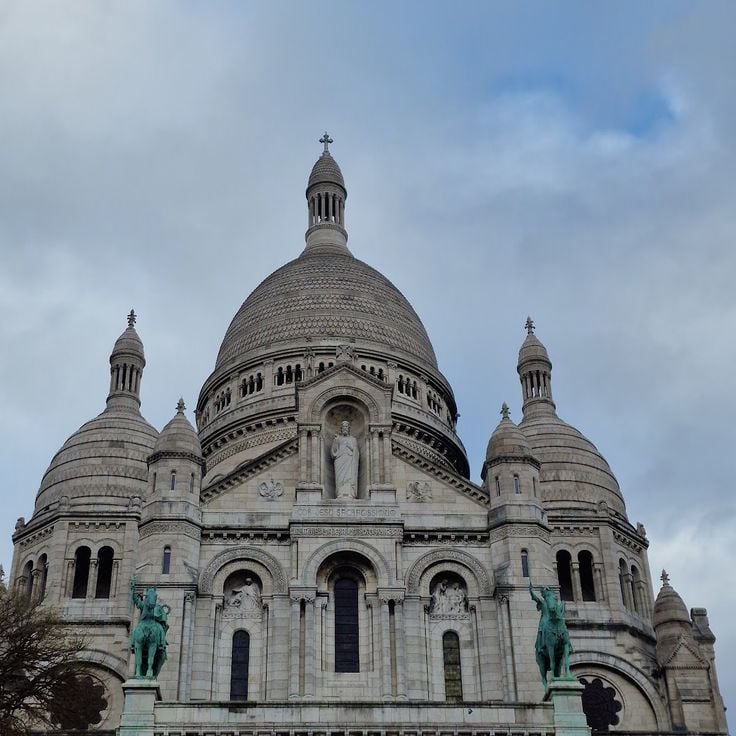
18th arrondissement of Paris, France
The Sacré-Cœur Basilica maintains its white appearance through a natural process involving its construction material. Built from Château-Landon limestone, the building secretes calcite when exposed to rainwater. This chemical reaction creates a continuous self-cleaning effect on the surface, allowing the basilica to preserve its distinctive pale color more than a century after its completion.
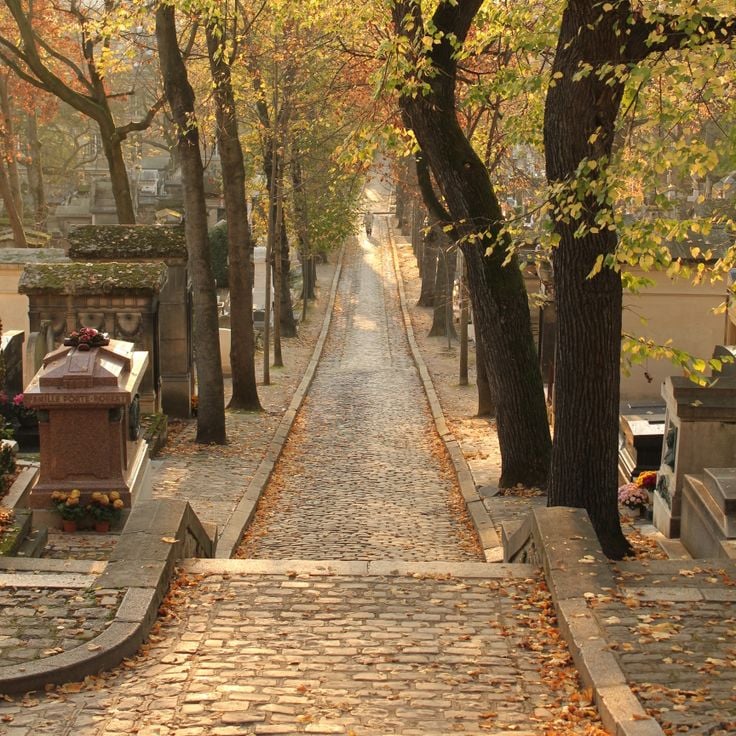
20th arrondissement of Paris, France
Père Lachaise Cemetery opened in 1804 and covers 44 hectares with winding pathways and more than 70,000 graves. This cemetery holds the burial sites of Oscar Wilde, Édith Piaf, Jim Morrison, Frédéric Chopin, and Molière. The grounds combine green spaces with monuments from various centuries and architectural styles. Visitors can obtain maps at the entrance to locate the graves of notable figures.
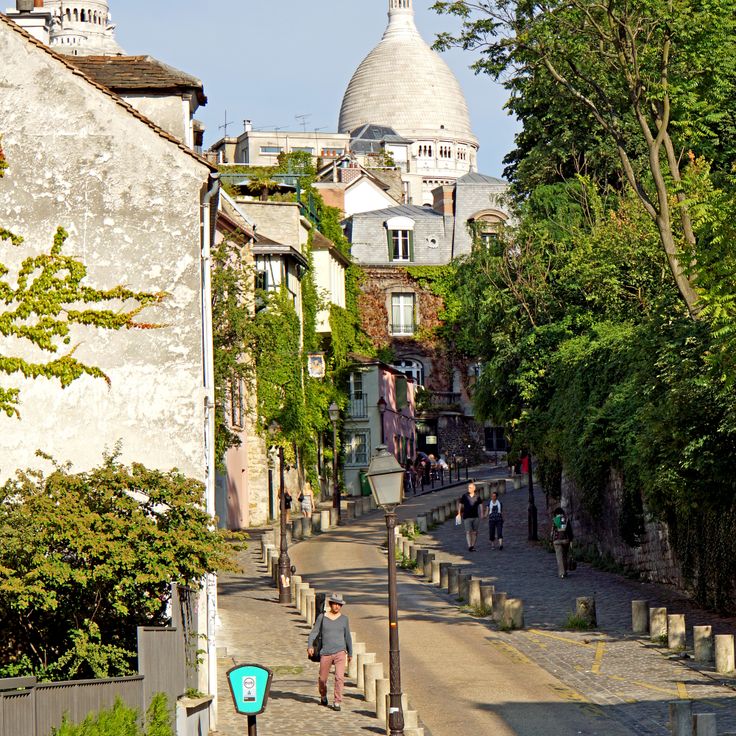
18th arrondissement of Paris, France
Montmartre served as a center of artistic life in Paris during the late 19th and early 20th centuries. This district contained the Bateau-Lavoir, a studio complex on Rue Ravignan where numerous painters and writers worked. Pablo Picasso lived there between 1904 and 1909, creating major works such as Les Demoiselles d'Avignon during this period. Other artists including Georges Braque, Juan Gris, and Amedeo Modigliani also used the studio spaces in this building.
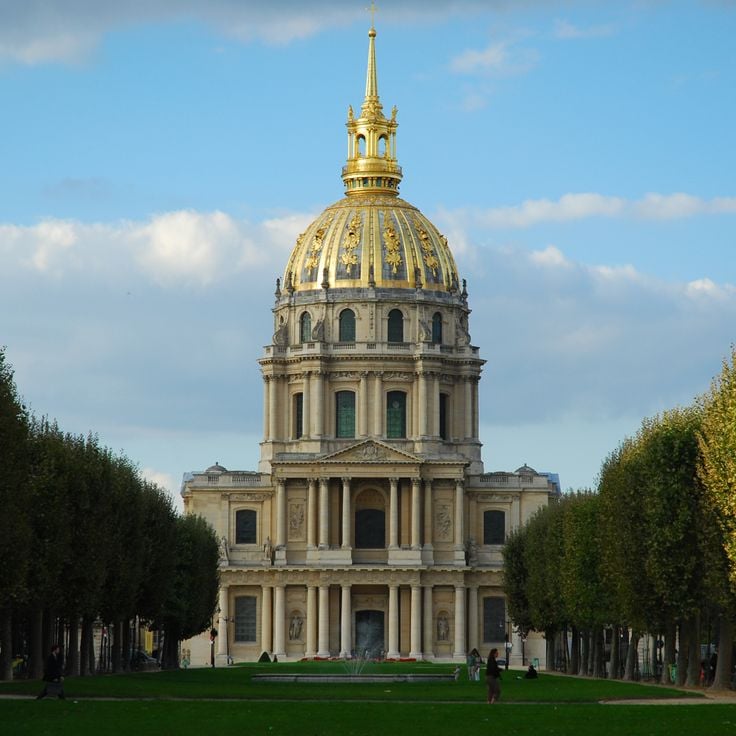
7th arrondissement of Paris, France
Les Invalides is an expansive 17th-century complex originally built as a hospital and residence for war veterans. Commissioned by Louis XIV, the site now houses several military museums, including the Musée de l'Armée with extensive collections of weapons, armor, and military artifacts. Beneath the golden dome of the Dôme des Invalides lies the tomb of Napoleon Bonaparte, who was interred here in 1861.
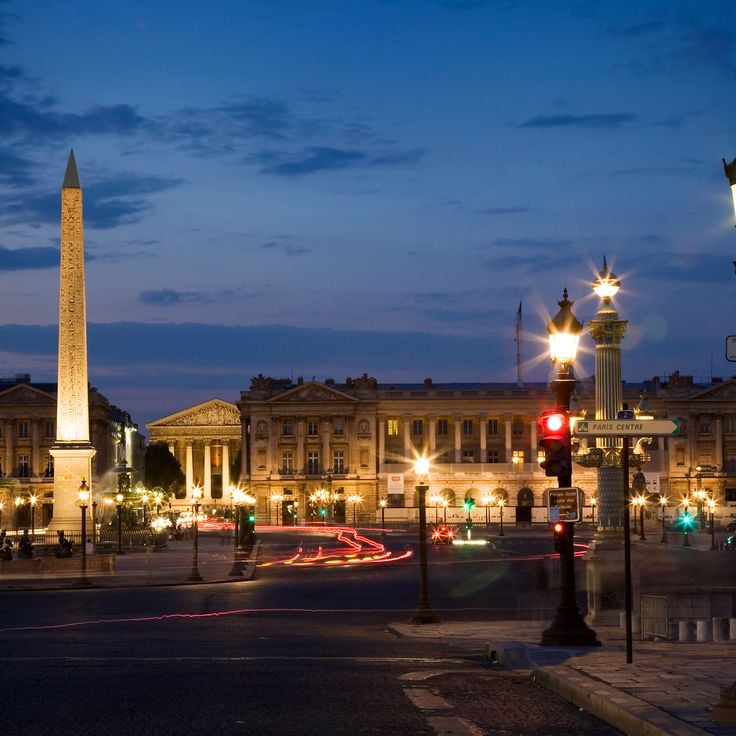
8th arrondissement of Paris, France
The Place de la Concorde spans 8.64 hectares in central Paris, forming an octagonal square between the Champs-Élysées and the Jardin des Tuileries. During the French Revolution, a guillotine was installed here from 1793 to 1795, executing 1,119 people including King Louis XVI and Marie Antoinette. The square was designed in 1755 under Louis XV and originally bore his name before receiving its current designation after the revolutionary period.
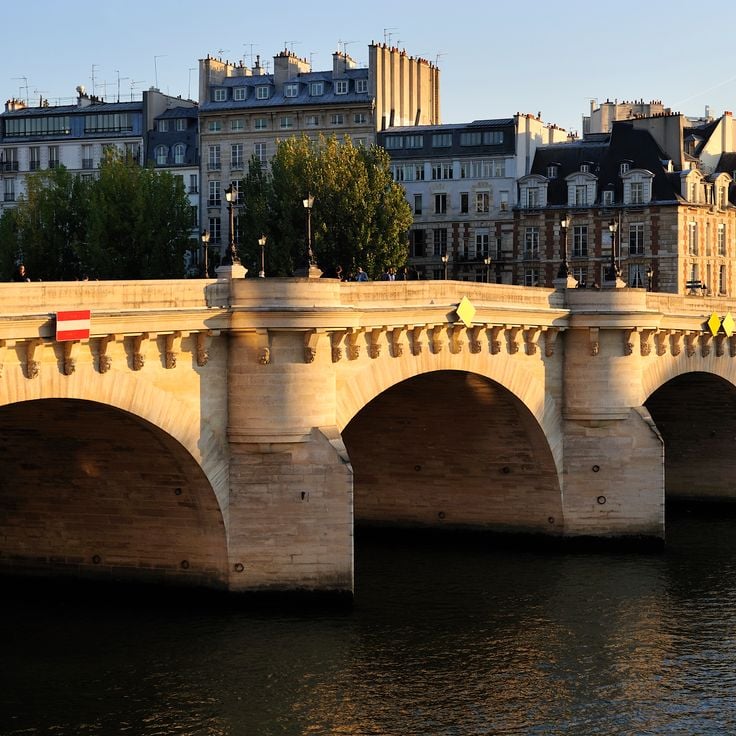
1st arrondissement of Paris, France
The Pont Neuf was constructed between 1578 and 1607 and stretches 232 meters across the Seine. This stone bridge connects the Île de la Cité to both riverbanks through 12 arches. The corbels feature 381 stone masks representing forest deities and mythological figures. As the first Parisian bridge built without houses on its structure, the Pont Neuf offered unobstructed views of the river. King Henry IV inaugurated the bridge and had an equestrian statue of himself placed at its center.
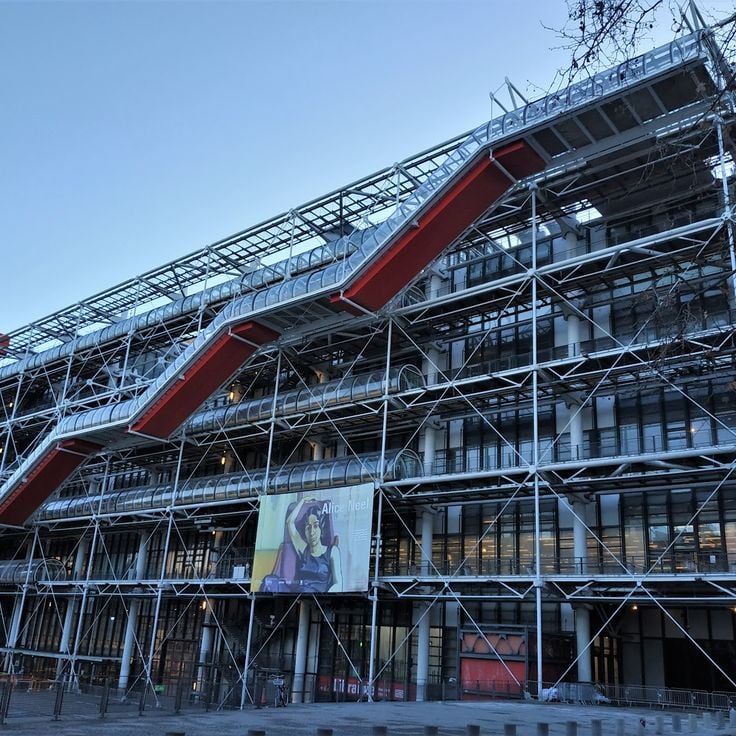
4th arrondissement of Paris, France
The Centre Pompidou opened in 1977 following a design by architects Renzo Piano and Richard Rogers. The construction displays all technical elements on the exterior facade: blue pipes for air conditioning, green for water, yellow for electricity, and red for transport. Glass escalators on the western facade carry visitors through the building. The facility houses the Bibliothèque publique d'information with free access, as well as the Musée national d'art moderne, which holds over 120,000 works from the 20th and 21st centuries.
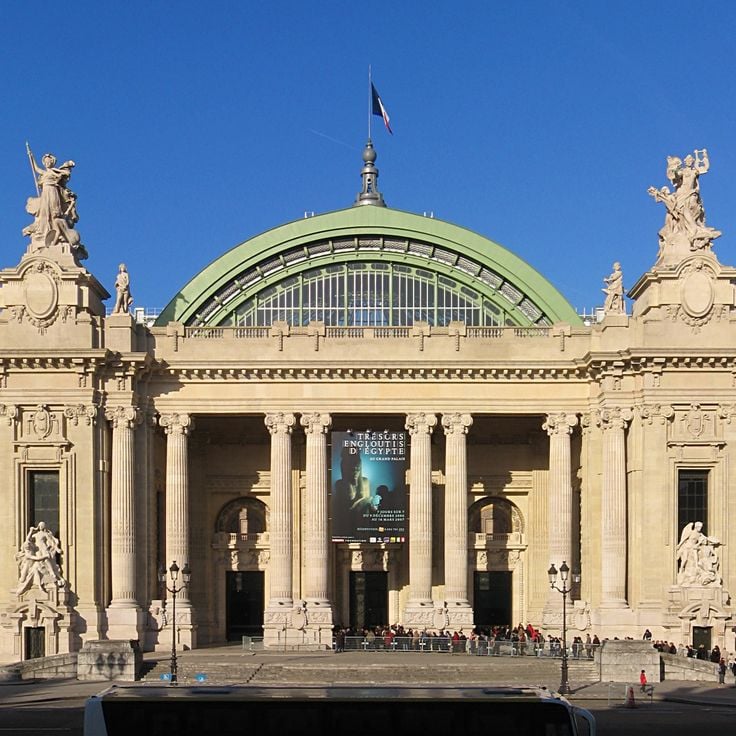
8th arrondissement of Paris, France
The Grand Palais was constructed for the 1900 World Fair and serves as an exhibition hall. The building features a 200-meter-long glass roof, one of the largest of its kind in Europe. The architecture combines classical stone facades in Beaux-Arts style with steel and glass construction. The central hall hosts art exhibitions, fairs, and cultural events.

7th arrondissement of Paris, France
The Champ de Mars is a public park extending from the Eiffel Tower to the École Militaire. The site served as a military drilling ground for the military school in the 18th century and witnessed several historical events during the French Revolution. The park was redesigned in the 19th century for the World's Fairs and received its current layout with lawns, tree-lined avenues and gardens. The central green space is bordered by walking paths and provides open views of the Eiffel Tower.
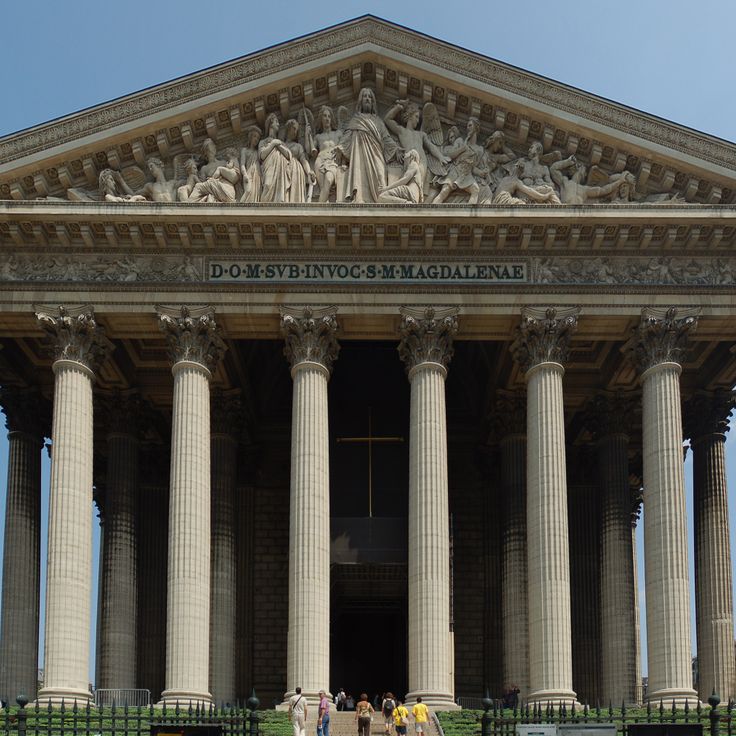
8th arrondissement of Paris, France
La Madeleine church was constructed between 1764 and 1842 in neoclassical style. The facade, surrounded by Corinthian columns, draws inspiration from Roman temples such as the Maison Carrée in Nîmes. During the Revolution, the building served various purposes before Napoleon decided to transform it into a temple of glory for his army. Under Louis XVIII, it was finally consecrated as a Catholic church.
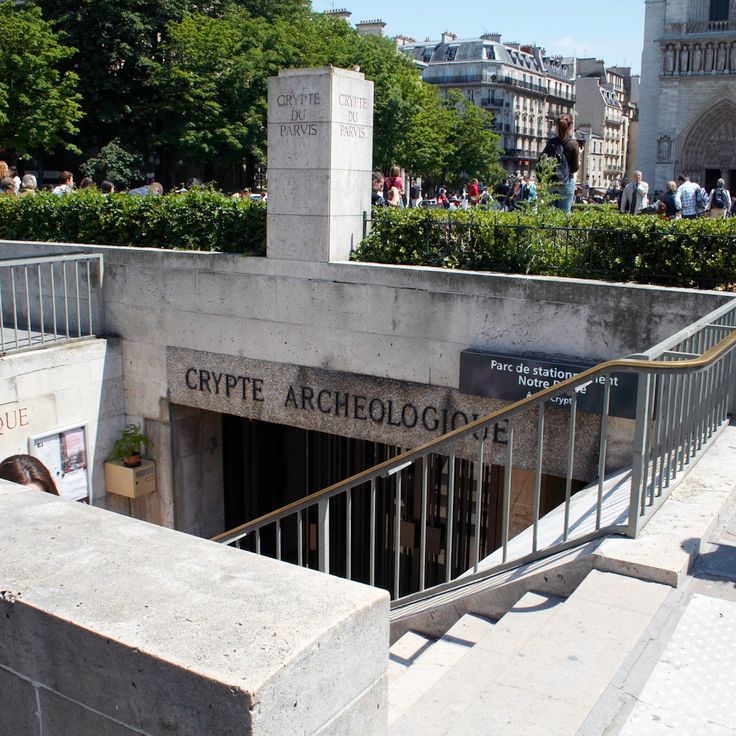
4th arrondissement of Paris, France
The Archaeological Crypt of the Île de la Cité presents findings from two millennia of Parisian history. The excavations beneath the square in front of Notre-Dame reveal remains from the Roman era, including foundations of ancient houses and baths. This underground site allows visitors to trace the different construction phases of the city, from the Gallo-Roman settlement of Lutetia to medieval Paris.
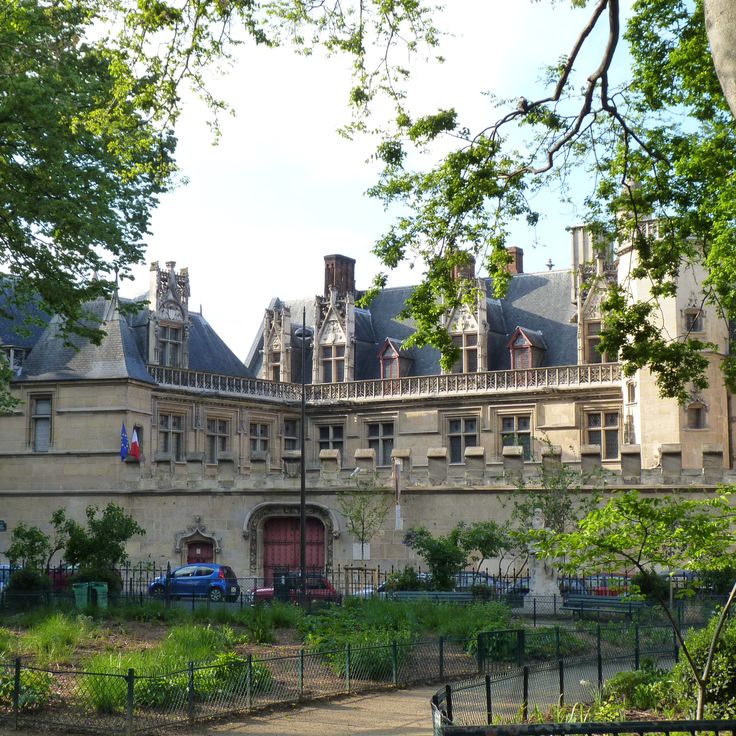
5th arrondissement of Paris, France
The Musée de Cluny occupies a 15th century mansion known as the Hôtel de Cluny, constructed above the remains of Roman thermal baths. This museum houses an important collection of medieval art, including religious sculptures, stained glass windows, liturgical objects, and illuminated manuscripts. Highlights include the famous Lady and the Unicorn tapestries from the late 15th century, as well as Gallo-Roman artifacts from the ancient settlement of Lutetia.

18th arrondissement of Paris, France
Le Mur des Je t'aime was created in 2000 by Frédéric Baron and Claire Kito in Square Jehan Rictus. The installation consists of 612 glazed lava stone tiles displaying the word love in 311 languages and dialects. The red fragments scattered across the wall symbolize pieces of a broken heart that humanity must reassemble together.

Paris, France
The covered passages of Paris are historical shopping corridors with metal structures and glass roofs, constructed between 1800 and 1850. These architectural ensembles house shops, cafés and restaurants. The passages emerged during the industrial revolution and served as protected pedestrian walkways between Parisian boulevards. They feature decorative elements such as mosaics, columns and wrought iron ornamentation. Several of these passages are located in the central arrondissements of the city.

5th arrondissement of Paris, France
The Arènes de Lutèce is a first-century Roman amphitheater that could accommodate 15,000 spectators. This ancient structure served as a venue for theatrical performances and gladiatorial contests during the Gallo-Roman period. The building was abandoned in the third century and rediscovered in the 19th century. Today, the Arènes de Lutèce stands as one of the few remaining testimonies to the Roman past of Paris and functions as a public park.
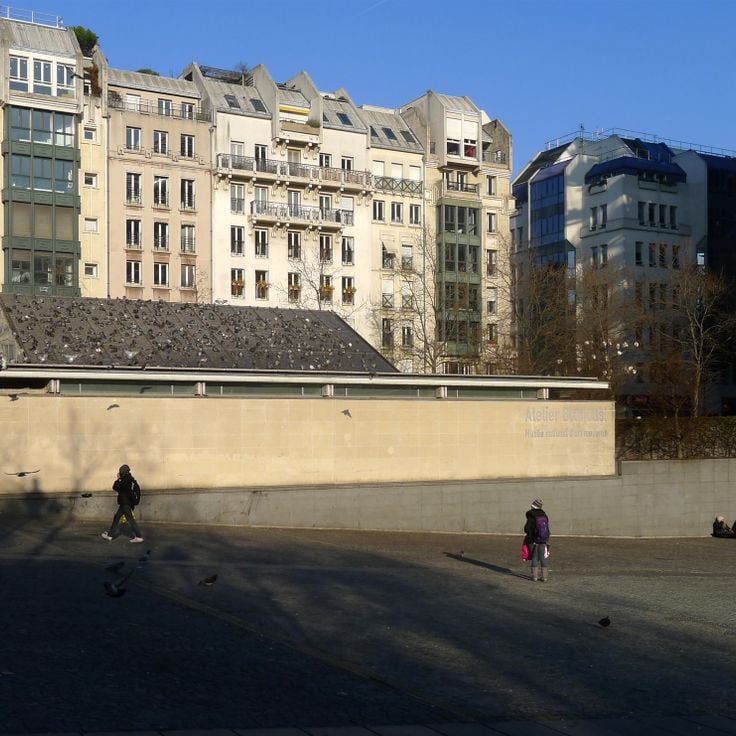
4th arrondissement of Paris, France
The Atelier Brancusi presents the original workshop of Romanian sculptor Constantin Brancusi in Paris. The space preserves his working furniture, tools, and a collection of his sculptures. Brancusi worked here from 1916 until his death in 1957, and bequeathed the entire contents to the French state on the condition that the studio be faithfully reconstructed.
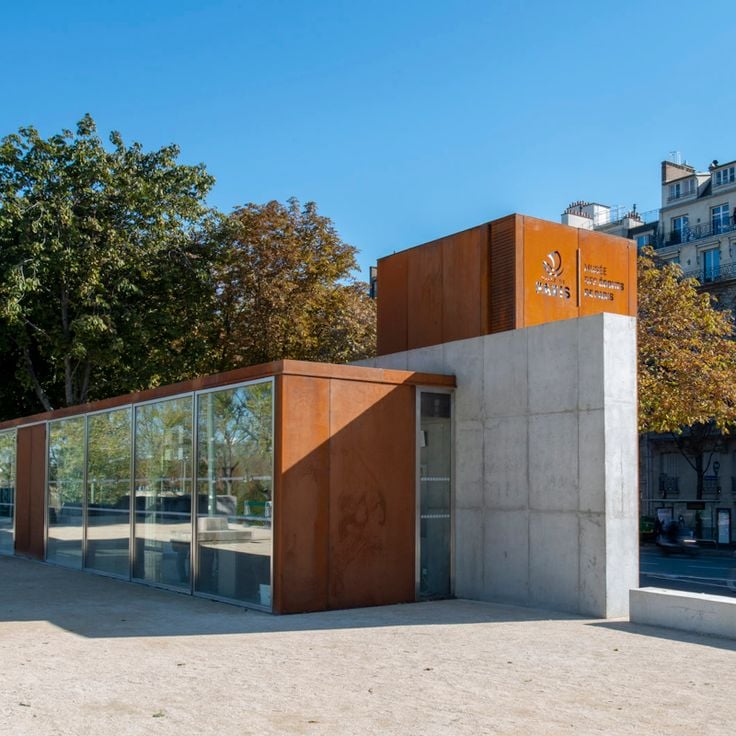
7th arrondissement of Paris, France
The Musée des Égouts de Paris is located in the underground sewer system of the French capital. The sewers were modernized and expanded during the 19th century under Baron Haussmann. Visitors can explore a section of the active wastewater system, which extends over 2,400 kilometers beneath the city. The museum displays the technical evolution of Parisian infrastructure, historical tools and equipment used by sewer workers, and the system's role in public health since medieval times.
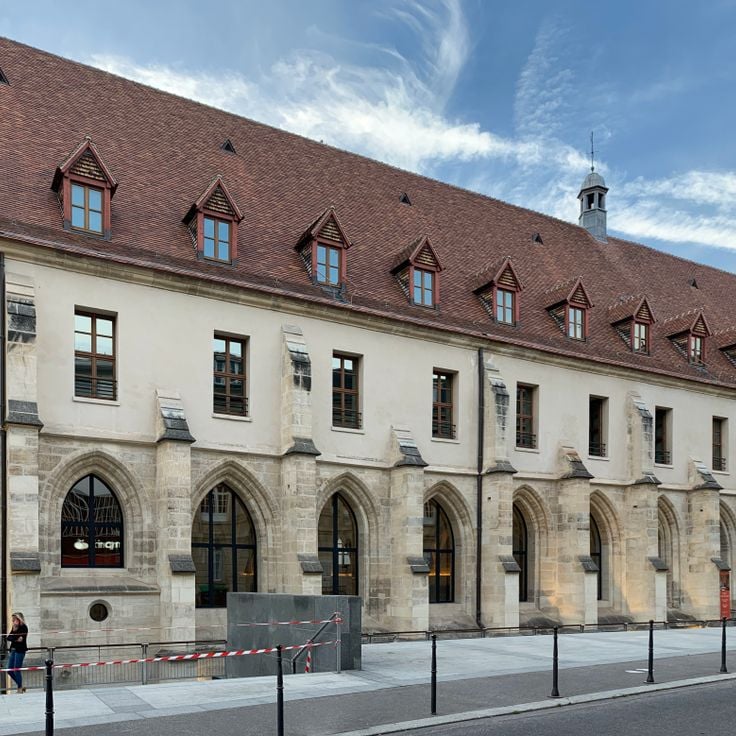
5th arrondissement of Paris, France
The Collège des Bernardins was built in the 13th century as a theological training center for Cistercian monks. The Gothic vaulted hall features slender columns and ribbed vaults extending over 70 meters in length. After centuries of use as a warehouse and fire station, the building underwent restoration beginning in 2004. Today, this medieval complex serves as a venue for conferences, exhibitions, and debates on contemporary societal topics.
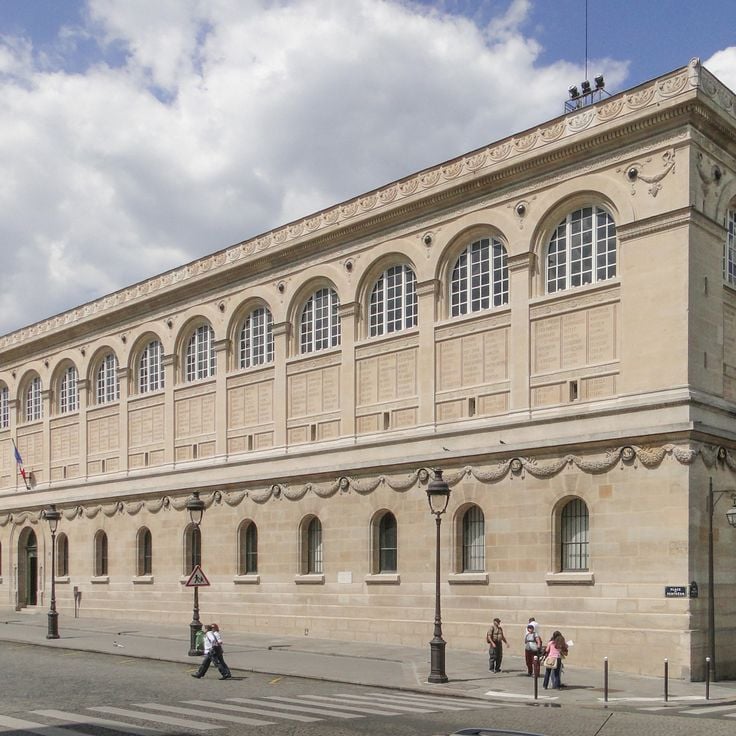
5th arrondissement of Paris, France
The Bibliothèque Sainte-Geneviève was constructed between 1843 and 1850 following the designs of architect Henri Labrouste. The building represents a masterwork of 19th-century iron architecture. The grand reading room extends across the entire length of the first floor and is supported by exposed cast iron columns. The library houses over two million documents, including numerous medieval manuscripts and incunabula. The collections encompass works on theology, literature, history, and natural sciences. The institution has served as a public study library for students and researchers since its opening.
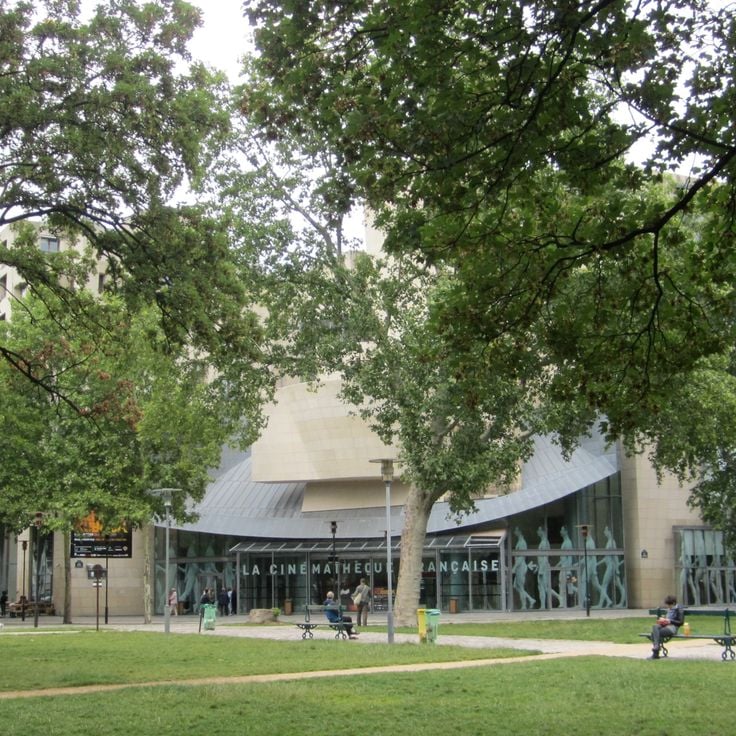
12th arrondissement of Paris, France
La Cinémathèque Française was founded in 1936 by Henri Langlois and Georges Franju and ranks among the most important film archives in the world. The museum holds a collection of over 40,000 films, including silent films and early sound films from all continents. The institution also preserves costumes, props, cameras, and documents related to film history. Since 1972, the Cinémathèque was located at the Palais de Chaillot before moving in 2005 to a building in Bercy designed by Frank Gehry. The former American Center was specifically adapted to meet the museum's needs. The permanent exhibition displays objects from the early days of cinema to the present.
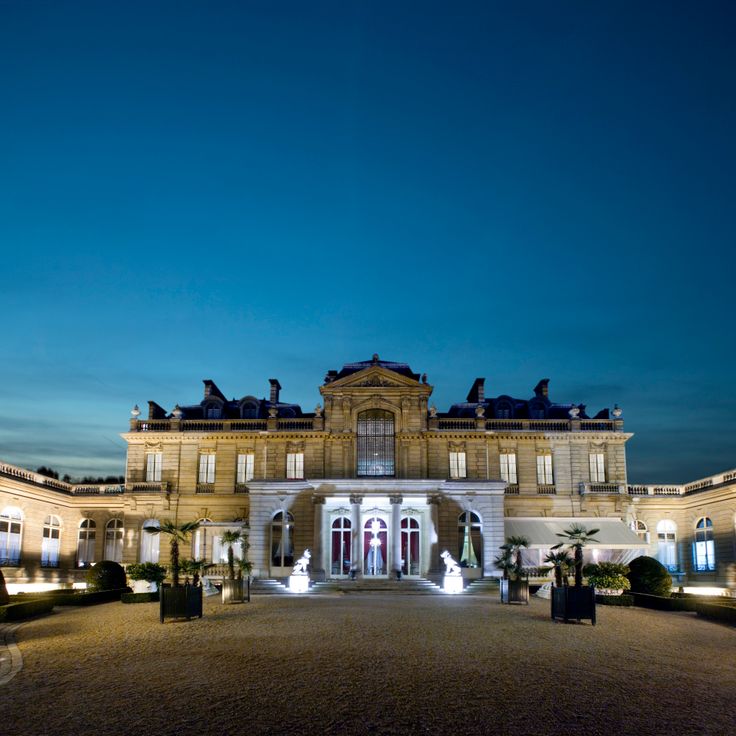
8th arrondissement of Paris, France
The Musée Jacquemart-André occupies a 19th-century mansion in the 8th arrondissement. Édouard André and his wife Nélie Jacquemart assembled this collection, which includes French furniture, paintings and tapestries from the 18th century. The Italian section displays Renaissance works, including paintings by Botticelli, Uccello and Mantegna. This museum preserves the original arrangement of rooms and reflects the lifestyle of Parisian high society during the Second Empire.

8th arrondissement of Paris, France
The Flame of Liberty is a full-sized copper gilt replica of the torch held by the Statue of Liberty, located above the Alma Tunnel. The monument was donated by the International Herald Tribune in 1989 to celebrate the newspaper's centennial and to honor Franco-American friendship. Standing on Place de l'Alma, the sculpture has become an informal memorial site over the years.
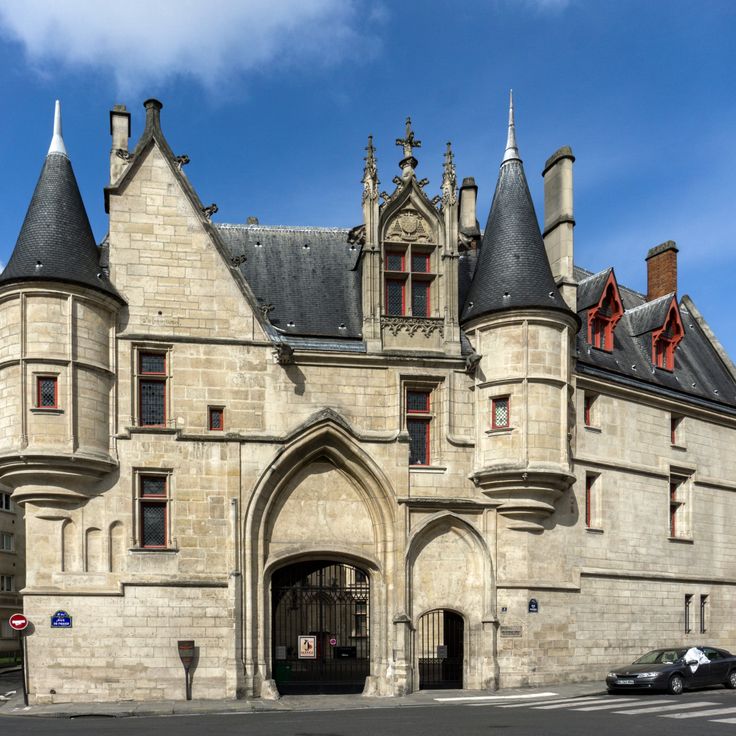
4th arrondissement of Paris, France
The Hôtel de Sens was built in the 15th century as a residence for the archbishops of Sens. The building combines military architecture with residential quarters and displays elements of late Gothic style. Today it houses the Forney Library, which specializes in decorative arts, fashion and garden design. The collection includes historical documents, catalogs and illustrated volumes.
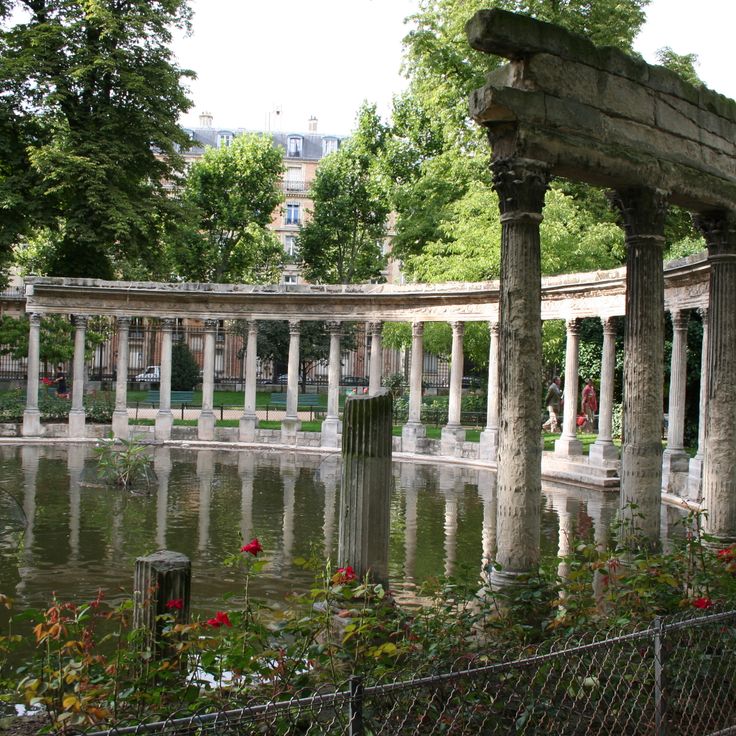
8th arrondissement of Paris, France
Parc Monceau was created in the 18th century as an English garden featuring a collection of architectural follies. The park contains a Roman colonnade salvaged from the former Hôtel de Ville, an Egyptian pyramid, a Chinese pagoda, Venetian bridges and a Dutch windmill. These architectural elements were assembled following the fashion of the period for exotic landscapes. The green space now serves as a public park in the eighth arrondissement.